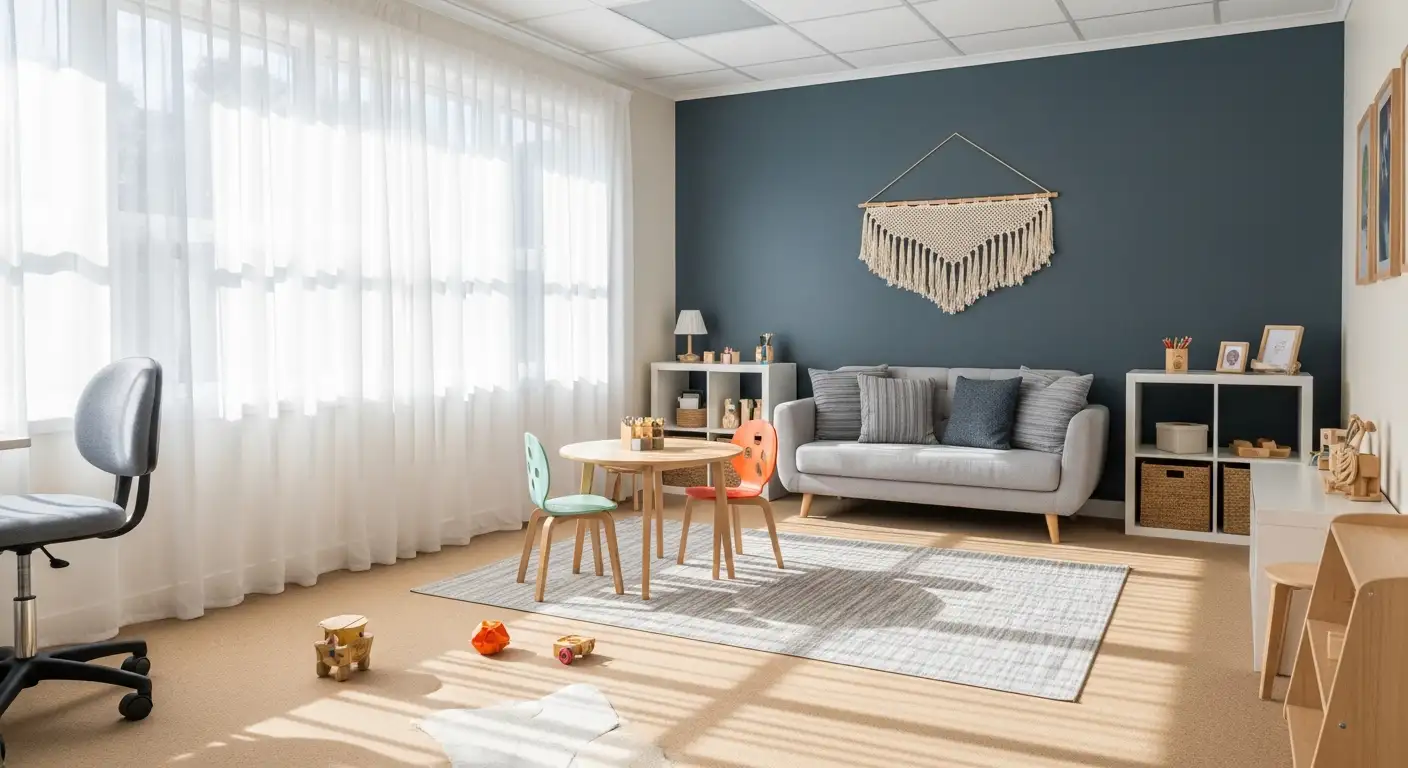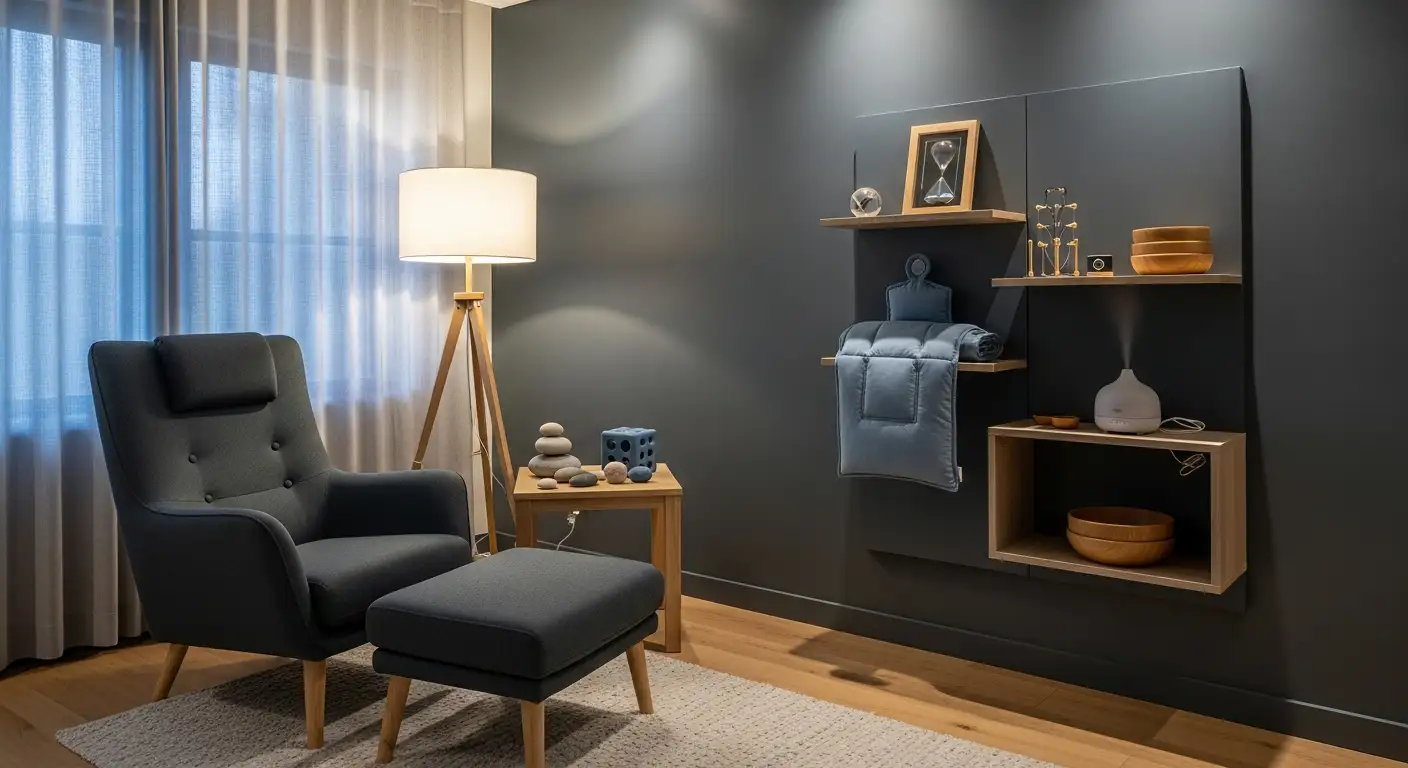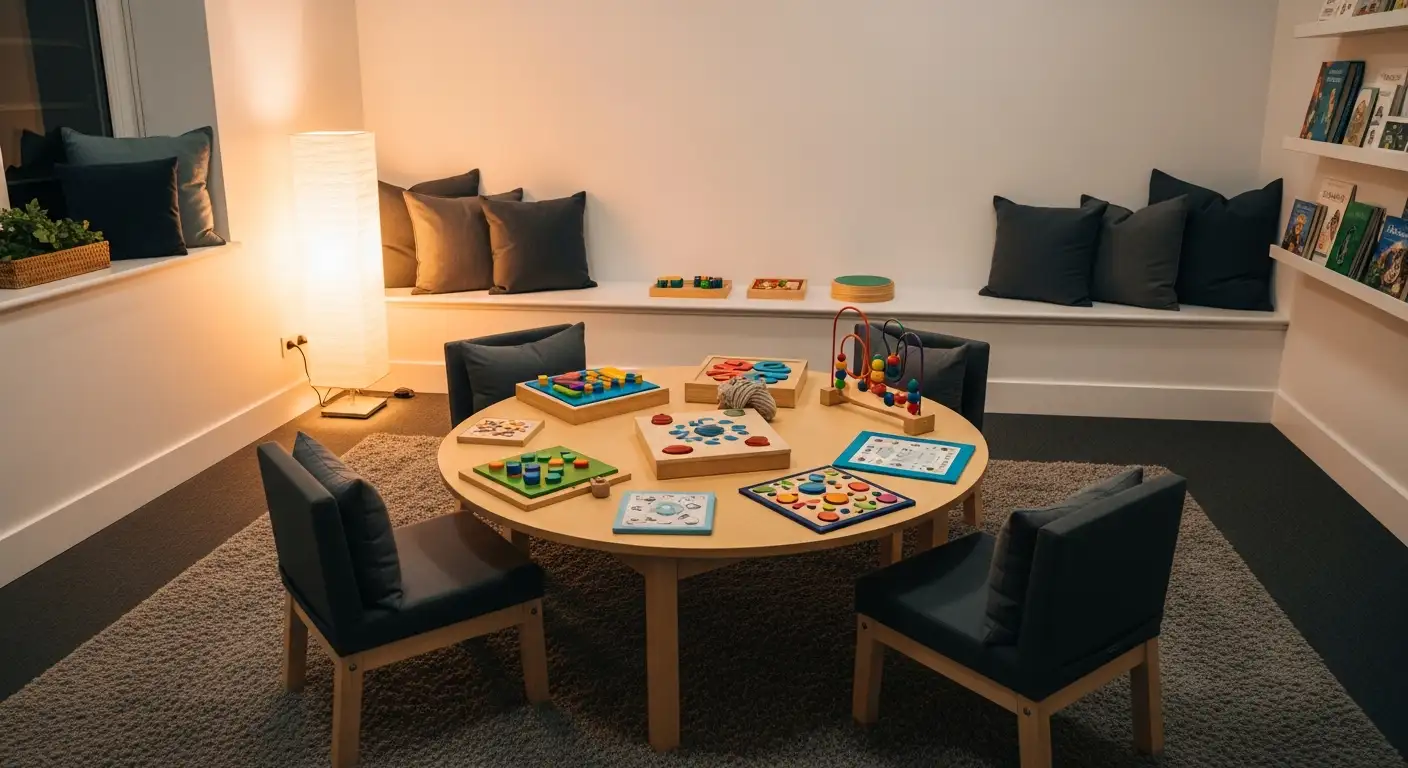The Crucial Role of Caregiver Co-Regulation in Autism Therapy
Applied Behavior Analysis (ABA) therapy is a cornerstone in autism treatment, focusing on skill development and behavioral improvements. Integral to its success is the collaborative role caregivers play through co-regulation—supporting children’s emotional and behavioral management by modeling calm, attuned responses. This article explores practical ABA-informed co-regulation tips for caregivers, emphasizing tailored strategies across developmental stages to foster independence and emotional resilience.
Understanding ABA Therapy and the Importance of Co-Regulation

What is Applied Behavior Analysis (ABA) therapy and how is it used to support individuals with autism?
Applied Behavior Analysis (ABA) therapy is a scientifically validated approach that helps individuals with autism learn and improve vital skills. It works by studying how behavior is affected by the environment and uses techniques like positive reinforcement to encourage desirable actions. ABA programs are personalized to the individual's specific needs, focusing on areas such as communication, social interaction, daily living skills, and academic learning. The therapy often combines structured tasks with play-based methods, enabling progress to be tracked closely through data collection. Research shows that early, intensive ABA interventions can significantly boost cognitive, language, and social abilities, helping individuals gain independence and improve their overall quality of life.
How does ABA therapy use an individualized approach?
ABA's strength lies in tailoring interventions to each person's unique profile. Therapists analyze behaviors and skills to design plans that address particular goals. This customization ensures methods are effective and suited to the individual's developmental stage and preferences. Collaboration with caregivers and other professionals refines these strategies, making adjustments as progress unfolds. By respecting individual differences, ABA promotes meaningful learning and sustainable behavior change.
What is the role of caregivers in co-regulation within ABA therapy?
Caregivers play a crucial role in supporting co-regulation, the process where they help manage another person's emotions, attention, and behavior using their own supportive presence. This interpersonal interaction lays the groundwork for children with autism to develop self-regulation skills over time. Caregivers provide full attention, remain calm, and use verbal and non-verbal reassurances like gentle words, eye contact, and soothing body language. They also apply strategies such as controlled breathing, movement, and environmental adjustments to create a calming atmosphere.
Proactive co-regulation practices involve teaching coping techniques during calm moments so children can use them when distressed. Maintaining a safe and trusting relationship encourages learning and emotional development. Caregivers are encouraged to work with occupational therapists or behavior consultants to customize approaches that best fit their child’s needs.
How do self-regulation and co-regulation interact in the developmental process?
Self-regulation is the ability to independently manage one’s emotions, thoughts, and behaviors. However, this skill typically emerges through early co-regulation experiences, where a caregiver’s support helps the child understand and regulate their internal states. This learning process is reciprocal and happens over time as children develop.
Through co-regulation, children learn what their bodily feelings mean and how to respond appropriately. As they grow, they gradually take more responsibility for managing themselves, but often still rely on external guidance when upset. Co-regulation and self-regulation are intertwined throughout development, with effective early support fostering stronger independent regulation later in life.
| Aspect | Description | Application in ABA Therapy |
|---|---|---|
| ABA Therapy | Behavior-focused, evidence-based intervention | Tailored programs addressing individual goals |
| Individualized Approach | Customized strategies based on unique needs | Continuous adjustments and professional collaboration |
| Caregiver Role | Supports emotional and behavioral regulation through presence | Uses calming techniques, reassurance, and proactive teaching |
| Self- and Co-Regulation | Developmental progression from supported to independent control | Emphasizes caregiver-child interactions and gradual skill-building |
The Role of Caregivers as Co-Regulators: Strategies and Best Practices
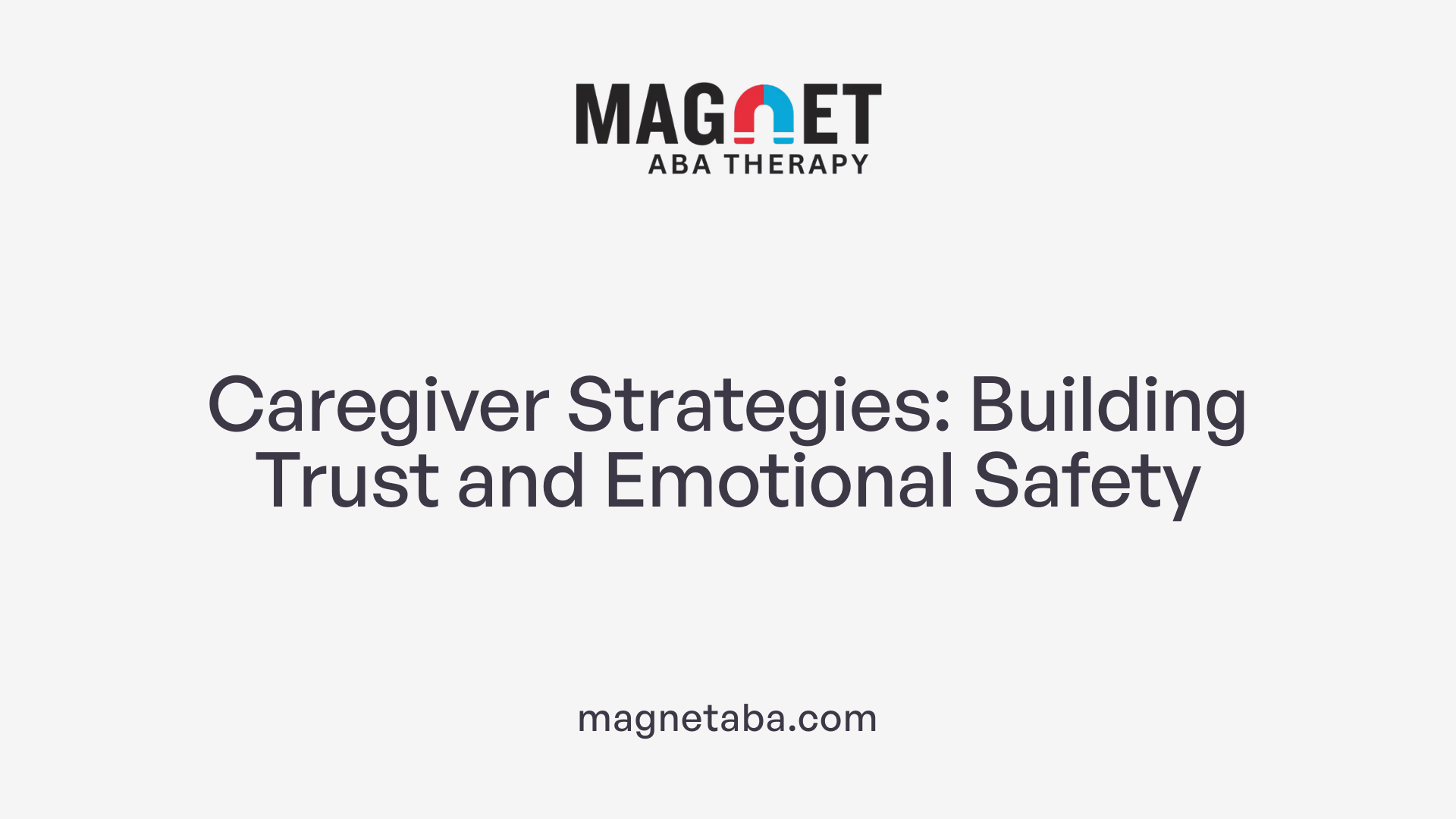
What is Co-Regulation and Why Does it Matter?
Co-regulation is a supportive process where caregivers help others—often children—manage their emotions, behaviors, and attention by using their own calm and focused responses. It’s foundational in helping individuals, especially young children, learn to self-regulate over time.
Why is Caregiver Presence and Emotional Regulation Crucial?
Effective co-regulation requires caregivers to be fully present, giving their undivided attention through eye contact and emotional attunement. Caregivers must regulate their own emotions first because their calm presence can biologically and behaviorally soothe the child, lowering stress hormone levels and preventing emotional escalation.
What Are Core Techniques in Co-Regulation?
Caregivers employ several strategies to support regulation, including:
- Controlled breathing: Teaching and practicing deep breathing exercises like box breathing.
- Environmental adjustments: Creating structured, predictable spaces that reduce sensory overload.
- Modeling: Demonstrating calm behavior and coping strategies to guide the child.
How Do Verbal and Non-Verbal Reassurance Support Co-Regulation?
Gentle verbal affirmations such as "I’m here. We can do this together" offer targeted reassurance without invalidation. Non-verbal cues—proximity, soothing body language, and gestures—also communicate safety and support.
What is the A.G.I.L.E. Approach in Co-Regulation?
This framework highlights five key caregiver elements during distress:
- Affect: Expressing calm emotions.
- Gestures: Using supportive body language.
- Intonation: Speaking in a gentle tone.
- Latency: Timing responses appropriately.
- Engagement: Maintaining focused connection.
Together, these practices create a powerful, attuned response that fosters trust and helps the individual regain emotional balance.
Tailoring Co-Regulation Across Developmental Stages
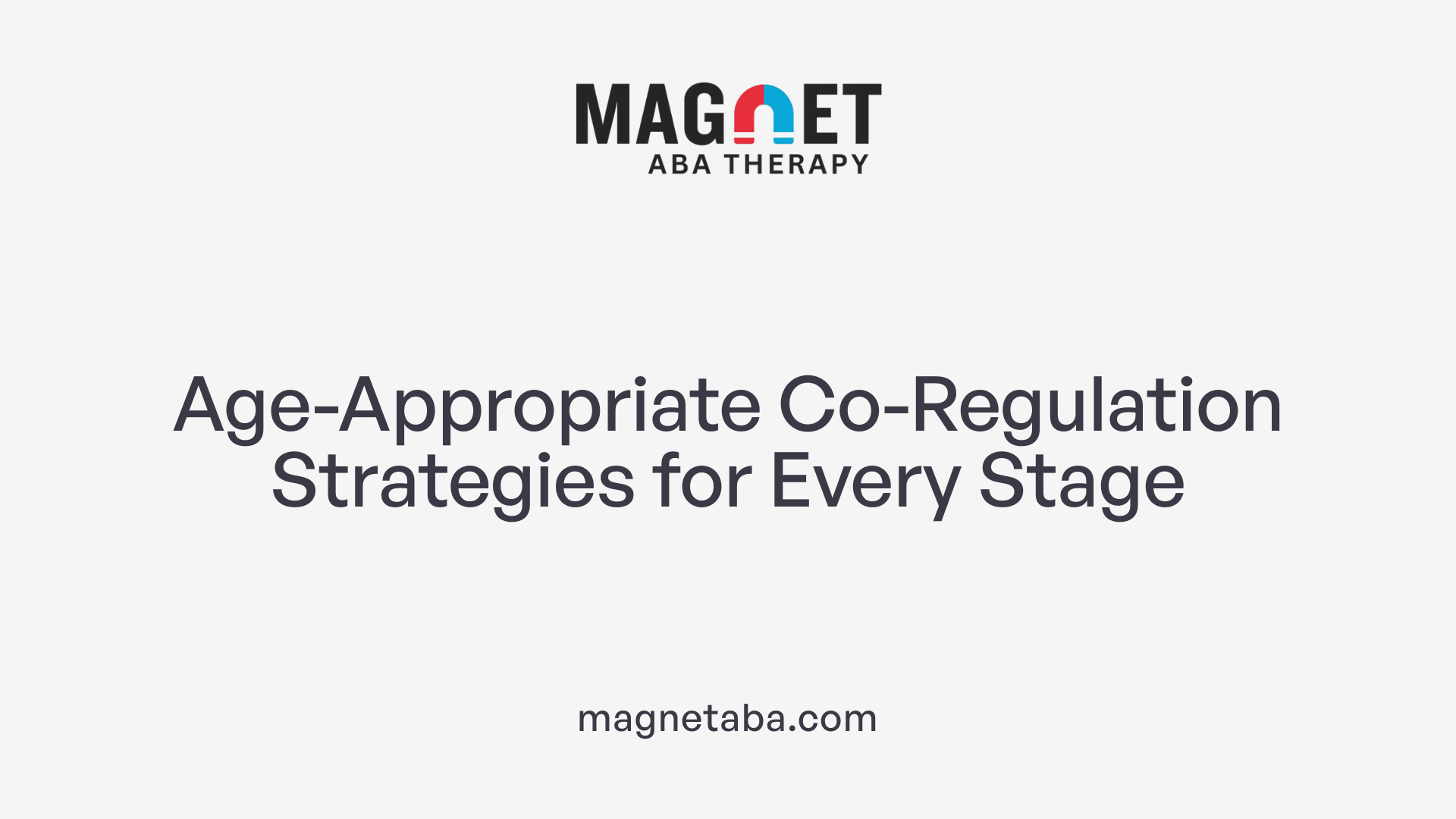
Co-regulation strategies for infancy to adolescence
Co-regulation evolves as children grow, requiring caregivers to adjust their approaches to match the child's developmental stage. In infancy, co-regulation focuses on providing warmth, anticipating needs, and creating structured, predictable routines to foster security. Toddlers benefit from learning emotion words, observing calming techniques modeled by caregivers, and having their attention gently redirected.
Preschool children require more advanced strategies such as coaching in problem-solving, modeling self-calming behaviors, and access to calming spaces alongside consistent consequences. For elementary-aged children, nurturing relationships and modeling conflict resolution become essential alongside coaching coping skills and teaching organizational abilities. Adolescents need warm, supportive relationships with caregivers modeling sophisticated self-regulation and monitoring risk-taking behaviors.
Importance of developmental tailoring
Tailoring co-regulation strategies to developmental stages ensures the support meets the child’s individual needs and cognitive abilities. This individualized approach fosters better emotional understanding and regulation skills, enhancing the child's ability to manage distress effectively. Collaborating with professionals helps caregivers fine-tune methods suited for the child's age and unique profile.
Examples of age-appropriate approaches
- Infants: Offering warmth and predictable routines to address interoceptive needs.
- Toddlers: Naming emotions (“You seem upset”) and modeling calming breathing techniques.
- Preschoolers: Guiding simple problem-solving and creating designated calming areas.
- Elementary-aged: Coaching coping skills and modeling positive conflict resolution.
- Adolescents: Engaging in reflective dialogues and modeling self-regulation strategies.
Role of structured routines and consistency
Structured environments with consistent routines are foundational for developing self-regulation. They provide stability and clear expectations that reduce anxiety and help children anticipate and prepare for transitions. Such predictability complements co-regulation efforts by creating a safe context where regulatory skills can emerge and grow progressively.
Caregiver Self-Regulation: Foundation for Effective Co-Regulation
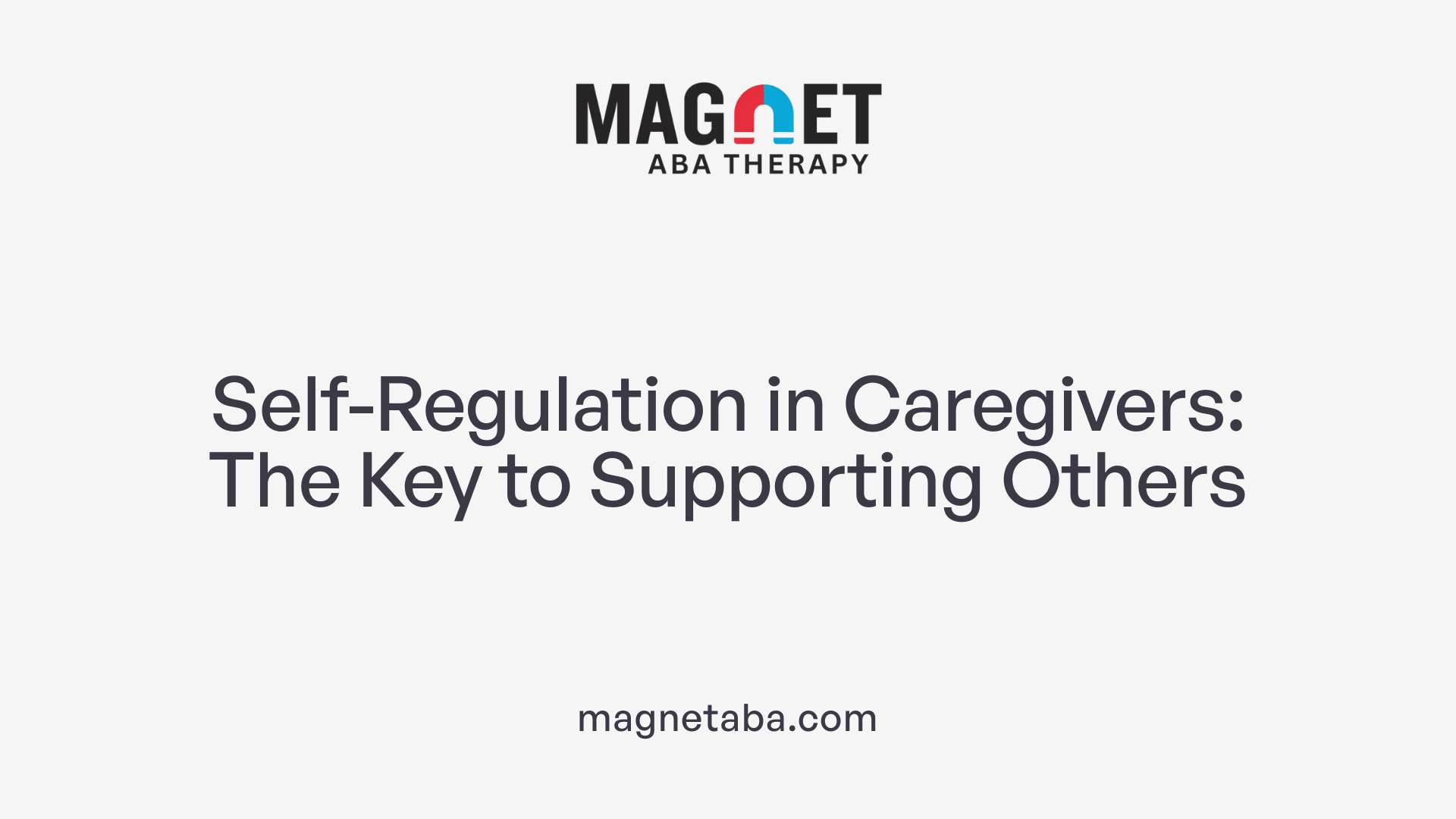
How Does the Caregiver's Emotional State Impact Child Regulation?
Caregivers' emotions play a crucial role in helping children regulate their feelings. When caregivers maintain calmness during a child's distress, they act as a biological and emotional stabilizer. Emotional contagion via the brain's mirror neuron system means that a calm, responsive adult can help reduce a child's stress hormones like cortisol while increasing oxytocin, fostering emotional safety and resilience. Conversely, a caregiver's heightened stress can amplify a child's dysregulation.
What Techniques Help Caregivers Manage Their Own Stress?
Caregivers benefit from strategies such as deep breathing exercises (like belly breathing or box breathing), which effectively lower stress levels. Being fully present, empathizing with the child, mirroring their cues, and using calming self-talk are practical methods. Modeling calm behavior not only aids the caregiver but teaches the child emotional self-regulation through example.
What Role Does Biological Synchrony and Emotional Contagion Play?
Co-regulation involves biological synchrony — an alignment of nervous system responses between caregiver and child. This alignment facilitates sharing emotional states, helping the child feel understood and safe. The caregiver's calmness induces hormonal shifts that support the child's emotional recovery and development of self-regulation over time.
Why Is Professional Collaboration Important for Individualized Strategies?
Because regulation methods vary across individuals, caregivers are encouraged to work with professionals such as occupational therapists or behavior consultants. Tailoring strategies to the child's developmental stage and needs ensures effective support. Professionals can provide guidance for both co-regulation and caregiver self-regulation practices, enhancing outcomes for the child and family.
Integrating ABA Techniques to Enhance Co-Regulation and Promote Self-Regulation

What are common techniques used in ABA therapy?
Applied Behavior Analysis (ABA) offers several structured methods that support co-regulation and self-regulation. Key techniques include positive reinforcement, where desired behaviors, such as calm responses or appropriate communication, are rewarded to encourage repetition.
Visual modeling helps individuals, especially children with autism, learn regulation skills by watching demonstrations through pictures, videos, or live examples. Prompting and fading guide children in managing emotional responses by providing cues and gradually reducing support.
Behavior chaining breaks down complex emotional regulation steps into manageable segments, facilitating skill acquisition. Redirection and modeling calm behavior are used during distress to guide children toward appropriate responses.
How does ABA therapy tailor interventions to meet the unique needs of each individual?
ABA focuses heavily on individualized intervention through detailed assessments of a child's emotional and behavioral patterns. This ensures that strategies for co-regulation are personalized, respecting that what works for one child might not work for another.
Therapists collect ongoing data to monitor progress, allowing them to adjust techniques such as specific prompts or reinforcements. This data-driven approach helps in creating an effective regulation plan that aligns with the child's developmental stage and sensory preferences.
How do modeling calm behavior and emotional regulation work in co-regulation?
Modeling calmness is a cornerstone of effective co-regulation. Caregivers and therapists who maintain calm tones, steady breathing, and composed body language provide a direct example for children to mirror.
By demonstrating self-regulation, adults reinforce a safe environment where the child feels emotionally supported. This biological syncing fosters emotional contagion, where a calm adult helps stabilize a child's nervous system, making regulation more attainable.
How does proactive co-regulation teach coping skills?
Proactive co-regulation strategies involve practicing calming techniques before distress occurs. For example, adults can teach deep breathing exercises like belly or box breathing during calm moments, ensuring children are prepared to use these skills under stress.
This anticipatory approach strengthens the child's ability to manage emotions independently over time, gradually fostering self-regulation. Incorporating practice and positive reinforcement within ABA therapy supports mastery of these coping skills.
| ABA Technique | Purpose | Application to Co-Regulation |
|---|---|---|
| Positive Reinforcement | Increase desired behaviors | Reward calm behavior and effective communication |
| Visual Modeling | Demonstrate skills visually | Show regulated behavior and calming techniques |
| Prompting and Fading | Teach skills with support cues | Guide emotional responses, then reduce assistance |
| Behavior Chaining | Break down complex skills | Teach stepwise regulation strategies |
| Modeling | Demonstrate emotional control | Adults model calmness to support emotional syncing |
| Data-Driven Adjustment | Tailor intervention per progress | Modify strategies based on individual responsiveness |
Integrating these ABA methods into co-regulation efforts provides a robust framework where caregivers and professionals can coach children toward reliable self-regulation, improving emotional resilience and social success.
Fostering Emotional Growth Through Collaborative Regulation
Co-regulation is a vital interpersonal process that supports children with autism in managing emotions and behaviors while building self-regulation skills foundational to lifelong emotional health. When caregivers engage with intentional presence, calmness, and individualized strategies—guided by ABA principles—the therapeutic alliance strengthens, promoting resilience and independence. By integrating developmentally tailored approaches and prioritizing caregiver self-regulation, families and professionals collaboratively enhance the effectiveness of ABA therapy. This cooperative journey not only helps children navigate challenges more successfully but also nurtures secure, trusting relationships essential for holistic growth.
References
- Pro Tips: Co-regulation and self-regulation
- CO-REGULATION STRATEGIES FOR CAREGIVERS
- The Power of Co-Regulation and Interoception
- Co-Regulation: Tools to Support Kids' Emotions
- What is the Deal with Co-Regulation?
- What Is Co-Regulation?
- Applied Behavior Analysis (ABA)
- ABA Techniques: Strategies for Behavior Analysts - GSEP Blog
- Applied Behavior Analysis (ABA)
- ABA Therapy Examples, Definition & Techniques



